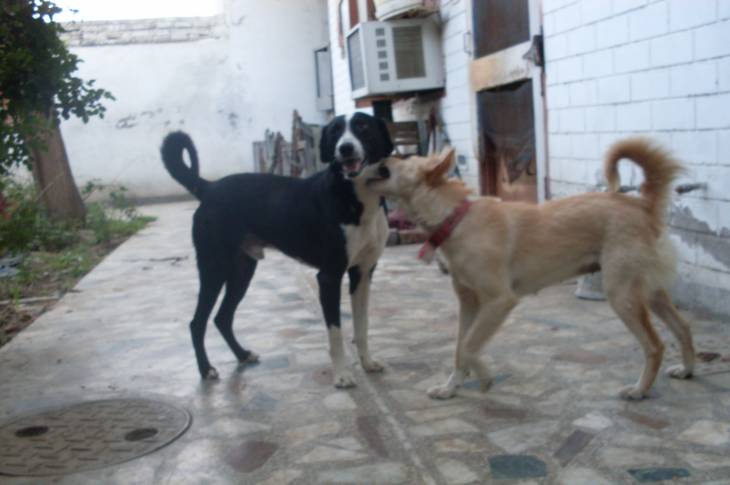My Dog Doesn’t Want to Eat! (Some Recommendations)
You can lead a horse to water, but you can’t make him drink. This time-honored phrase could be easily applied to your dog, which may react with a freshly poured bowl of kibble with extreme indifference. Is he just being stubborn, or is there something else afoot?
Dogs, Behavior, and Picky Palates
Sometimes, a dog’s appetite is congruent with his own inherent behavior. For instance, if a dog is not comfortable in his surroundings, he may not feel comfortable with chowing down. This could stem from the presence of an aggressive dog, or even a dog dish placed at an uncomfortable height.
This sense of unease could also generate from a short-term or long-term life change. If you move to a new place to live, it may take him a bit for him to adjust to the new digs until he gets his appetite back. If you take your pooch on the road – say, you drive to a relative’s house for the holidays – his lack of appetite may be a sign of dealing with motion sickness.
Of course, it could also be a simple matter of your dog not liking the dog food you bought him. Just because dogs are animals, that doesn’t mean that they won’t develop various likes or dislikes when it comes to chow. Sometimes, all it takes is a switch in food to get your pooch eating again.
It should be noted that a dog’s size and breed may also play a role in his dining habits. Larger breeds like Labradors are ravenous eaters that will devour pretty much any kibble you put in front of his face. Small breeds like Yorkies and Malteses, on the other hand, tend to be decidedly more finicky and require a greater measure of patience.
The Importance of Routine

Since a dog’s eating habits can be strongly linked to their need for a comfortable environment, it’s very vital to get him used to a set dining schedule. Creating a solid, unwavering routine around when your pup is going to be fed fosters predictability, which ultimately will drive positive dining habits. Remember: dogs tend to thrive on predictability.
However, crafting an effective routine does not just stop at feeding him at a specific time every day. There are other things that you should do to properly shape your pooch's dining experience. These elements will help him to properly prepare and take advantage of the designated meal time.
For instance, you should avoid feeding your pooch table scraps at all costs prior or even after his feeding time. If you relent in this area, you may unwittingly cultivate a behavior in which your pooch feels completely comfortable with forgoing his own chow for a better prize. Namely, the extra chicken that you’re not going to finish.
You should also tread very lightly on doggie treats. Specifically, you shouldn’t get into the habit of just loading him up on snackable goodies without a purpose attached. They’re called treats for a reason – if you give him an abundance of them during the day, he may decide that he can make do without dry kibble.
It's also a terrific idea to bring your pooch for a walk before mealtime for two big reasons. Firstly, it will serve as a prime indicator that food is coming his way soon. Secondly, exercise will naturally stimulate your dog's appetite, which means he’ll be ready to chow down when the time comes.
And even though a change in food may be all that is needed to boost your dog’s appetite, you should go about this type of change very carefully. Dog food type is also driven by routine. Too much of a disruption here may cause your pooch to develop poor behavioral-based dining habits.
When Should You Be Concerned Over a Loss of Appetite?
If your dog just suddenly stops eating his kibble despite the presence of a solid routine, then there may be something else in play that warrants your attention. More to the point, it warrants the attention of your dog’s veterinarian.
A lack of appetite is a common symptom for several serious ailments that can adversely affect your dog. Some of these issues run the gamut from digestive problems and various systemic infections to kidney failure or cancer.
In some cases, your dog’s age may play a role in his diminishing dining habits. Senior dogs may be more susceptible to dental issues, which may make eating his normal kibble a bit of a challenge. Also, a pooch’s sense of taste and smell may diminish over time – things that may simply make the act of eating less appealing to him.
If you’re not dealing with a senior dog, there are some tell-tale symptoms that you can look for that tends to go hand-in-hand with a loss of appetite. Some of these signs may appear to be subtle in nature, such as an increase in malaise or listlessness. Others may be significantly easier to spot, such as diarrhea or vomiting.
If any of these signs manifest along with a tendency to not eat food, it's vital that you get your pooch to the vet post haste. The type of treatment that awaits your pooch will obviously vary depending on the diagnosis. Just make sure that you follow whatever treatment your vet recommends to the letter.
Food is an Important Sign of Health in More Ways than One
It’s always important that you pay close attention to your pooch’s eating habits. Although your do cannot talk, his lack of regular eating may be telling you that there is something wrong, either physically or behaviorally. Make note of these signals and act accordingly.
And if it turns out that your dog is just being stubborn, be willing to work with him on his own level. Again, it could very well be that the new food you picked up for him isn’t something that pleases his palate, and a simple change needs to be made. As long as you don’t make it a habit, it’s okay for you to relent here.

